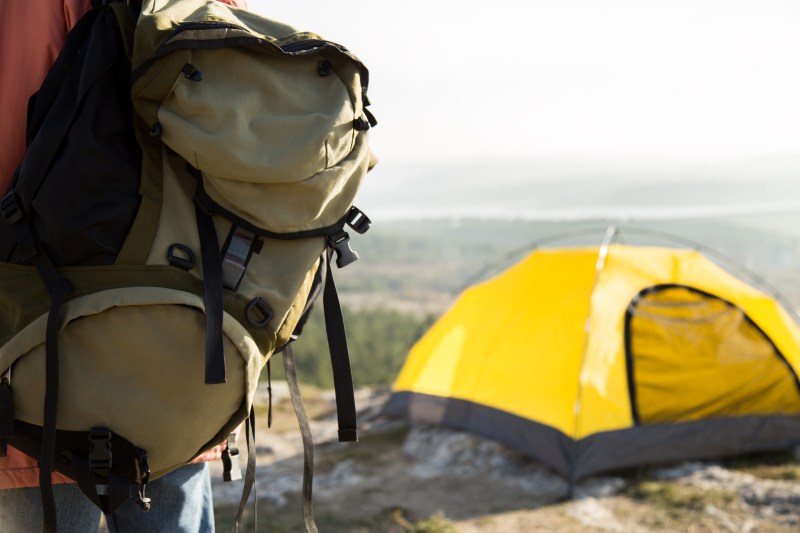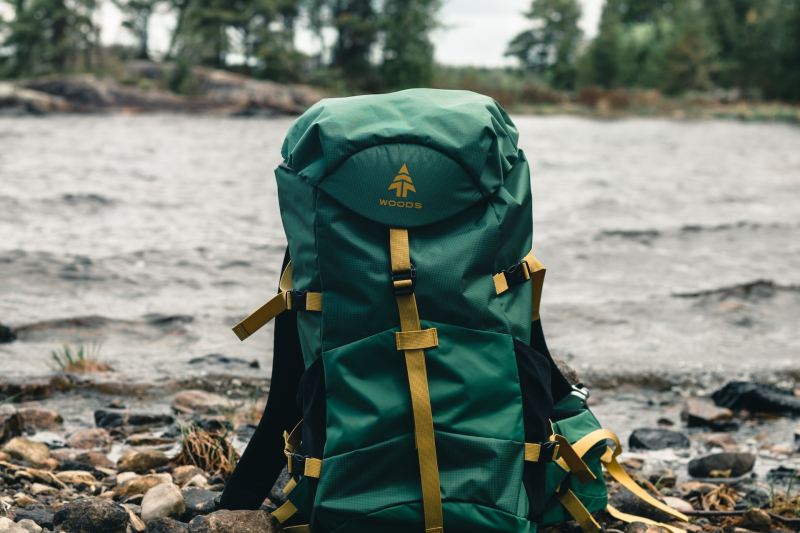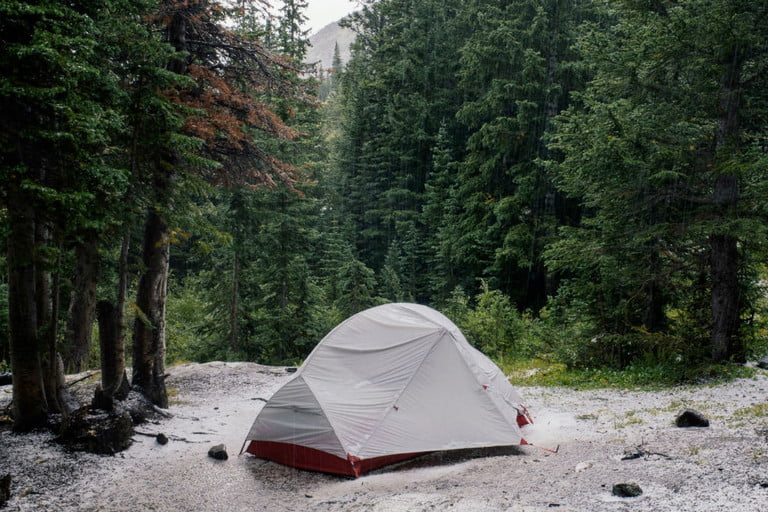
When you’re out for an overnight hike in the wilderness, you need to be amply prepared for the experience. At a minimum, that means having a map for self-navigation, plus packing water, food, a good tent, and your best hiking boots — you get the picture. You’ll also want to make sure you pack things properly so you don’t create an overly cumbersome pack, which can lead to a miserable slog along the way, or worse, injury and strain that can bring your planned outdoor adventures to a sudden end.
Learning how to properly pack a camping backpack is just as important as what you put in it. Learning how to pack a tent inside a backpack will allow you to focus on the things that really matter, like spotting wildlife along the way, not tripping over tree roots, and keeping your Instagram stories fresh with new videos from the backcountry. Here’s the low-down on how to pack a tent in a backpack like a pro in six easy steps.
How to pack a tent in a backpack (internal frame)

Step 1: Selecting a backpack
Most backcountry campers agree that a backpack with an internal frame is the best way to go. Internal frame backpacks are roomier, and the extra volume makes it easier to pack a tent inside. If you haven’t purchased a backpack or tent, ensure the sizes are compatible before buying. If you already have a tent and it’s on the larger side, you can use a compression bag to make the tent as compact as possible inside your pack.
Step 2: Preparing the tent
Before packing your tent, make sure it’s bone-dry since packing and carrying a wet tent is very cumbersome. If you’re unsure if it’s completely dry, set it up in your backyard or somewhere with lots of sunlight to let it air-dry for an afternoon. When you’re finally ready to pack it, lay out the tent to its full length on a flat surface. Keep the tent poles in the bag, and place them alongside the tent. Adjust the tent so its width is the same as that of the tent pole bag.
Step 3: Rolling the tent
Place the bag of tent poles onto the tent, and begin rolling up the tent and bag together into a tight “burrito.” Use the poles to keep the rolling tight, and make sure everything stays in line, so the tent poles don’t start to jut out above the tent and vice versa. After a few rolls, add the tent peg bag and continue rolling. Go slowly to keep things as tight and squared off as possible.
Step 4: Packing it in
Take the completed tent roll and stuff it inside the tent bag. The poles and pegs in the center will keep things compact and add central support.
Step 5: Preparing your backpack
Leaving the tent aside, pack some other items you’ll be carrying inside your backpack. Place the heavier items towards the bottom and the lighter objects toward the top.
Step 6: Packing your tent inside the backpack
Aim to place the tent in the middle of the backpack. Since your tent is one of your heavier items, placing it in the middle puts the least strain on your back. Ideally, your sleeping bag should be at the bottom of the pack, and your tent should be just above it.
In general, you can pack the tent vertically or horizontally. A vertical position allows for easy removal of the tent when unpacking, while a horizontal position allows you to pack other items on top of the tent. The best placement is whichever feels most comfortable for you.
How to pack a tent in a backpack (external frame)

Knowing how to pack a tent in a backpack with an external frame is similar, with a few subtle differences. You’ll still roll and prepare the tent in the same manner as you would using an internal frame backpack. The main difference is the tent’s placement in your pack, or rather on your pack. Ideally, place the tent on the exterior. External frame backpacks are specifically designed for this. The best placement is at the bottom of the backpack, as this ensures less stress on your back when you’re walking.
Just bear in mind that keeping the tent on the outside exposes it to extra risks — snagging on tree branches or saturation if it rains, for example. There’s also the danger of the tent falling off the backpack, leaving you in a bad situation. Make sure you tie a secure knot from your backpack to your tent to avoid it falling off and being left stranded.
Miscellaneous tips for mastering how to pack a tent in a backpack

If you’re looking to take your “how to pack a tent in a backpack” expertise to the next level, consider splitting up your tent components between hikers. If you’re hiking with a partner (and plan to sleep in the same tent), divvy up the parts so one person is carrying the tent and rainfly while the other carries the poles and stakes. This helps distribute both your loads.
For minimalist ultralight hikers, fast packers, and anyone looking to “go light,” consider skipping a stuff sack altogether for your tent. If you’re a featherweight packer, there’s a good chance you’re hiking with a small, streamlined pack anyway, and a loose tent will likely fit perfectly wedged between your other
What to do if your tent is wet

So far, all our tips are for packing your tent in your backpack at the beginning of the trip, when you can make sure everything is nice and clean and dry. But eventually, you’re going to have to head home, and you’re going to have to put your tent back in the backpack, which is fine if the weather has been dry, but what if your tent is wet?
First of all, if there has been overnight rain and the morning is sunny, move the tent to a sunny area and let it dry a bit. It shouldn’t take long. You can also use a towel to help speed up the drying process.
If the skies aren’t clear, get as much water off the tent as possible by shaking it out. Then, to protect the rest of the stuff in your backpack from getting wet, roll the tent up as tight as possible and put it into a watertight bag or even just a trash bag. Make sure the bag’s opening is facing up so the tent won’t drain into your backpack. Once you get home, make sure to unroll your tent and dry it out completely before storing it.



